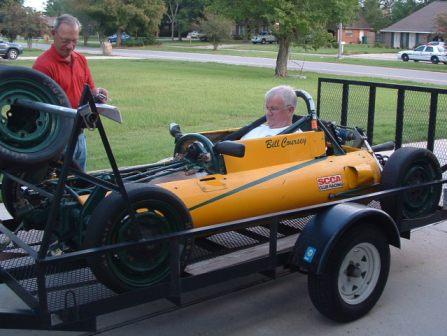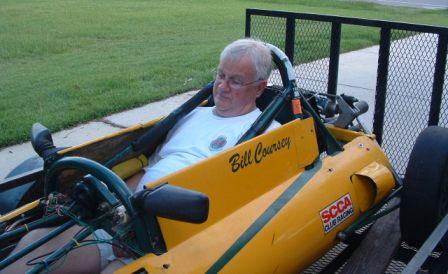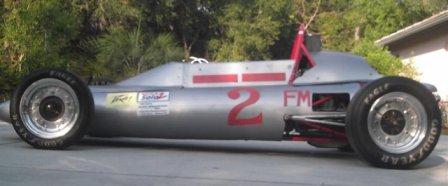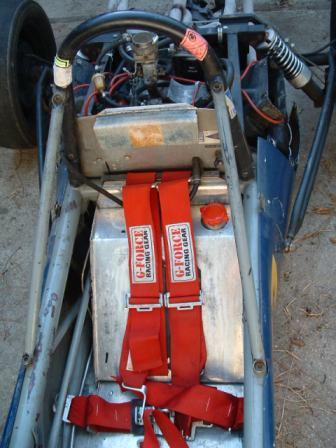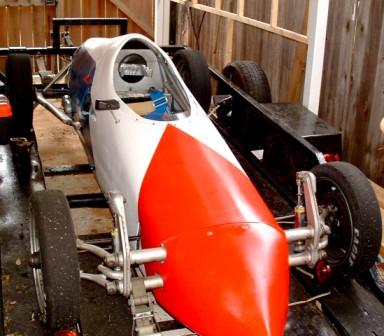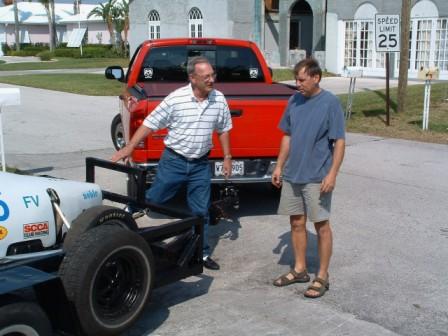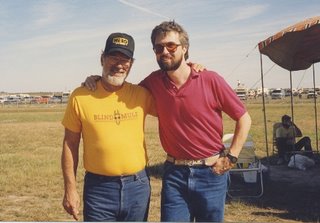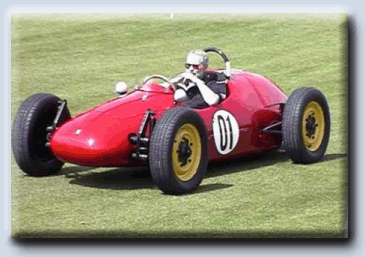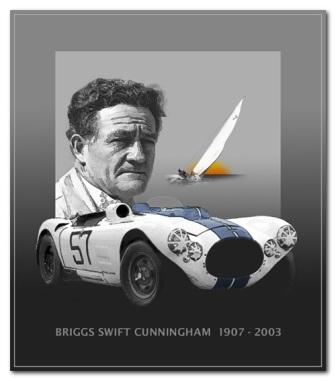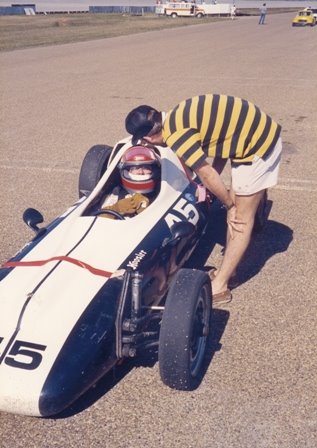OK. So here it is. My brother is getting racy. I’m crew chief for a car that is all dialed in and ready to run. It only requires maintenance and set up. The rest is up to the driver. The cosmetic aspects are Hugh’s. It is his car after all. I had no real problems to solve. Nothing was broken and it didn’t need fixing. Where is the fun in that?
I was still preaching the Formula First doctrine and getting some interest. Especially since Hugh had put the car on the track and done surprisingly well with it. A lot of people were looking. The idea of fast fun at a reasonable price was beginning to set in. We needed another car or two to set the hook.
The other part was that I want to get back in myself.
So now it was time to think about what I would go looking for. Where were we headed. Formula First. Right. But what did that mean and how would we get there.
The SCCA had put out a set of rules to use as a trial Spec in the Central Division, where FST is a being tested. So let’s use that as a basis. Basically a Formula Vee but with specific changes allowed.
You could use:
- Rack and Pinion steering rather than Volkswagen steering box
- A 1600 cc engine instead of 1200 (requires a restrictor plate on the intake manifold)
- Only one Carb and it is specified as to make, type, and mfg.
- Ball joint type front beam is acceptable.
- Front shocks are free and don’t require the original shock tower.
- Disc Brakes are allowed instead of drums.
- Wider tires are allowed but use a spec tire.
I figured we could take older cars, picked up at budget prices, and work our way in that direction, while building a class of competitive cars. Plus we get the fun of messing with the cars.
I had a direction.
I had been keeping an eye on Ebay, the SR Racing Sales Board, the SCCA sales list and other places for potential cars in my low budget price range.
I found one on Ebay that looked as if it could be brought around with a bit of work and put in a bid on it. It was a former VEE, which had been converted for Auto Cross some time in the past. It had a 1600 cc engine but nobody knew any thing about it. There was even a small trailer. It had been purchased sight unseen when some a guy in Jacksonville bought container contents which had been in storage until the owner had failed to keep up his storage payments. I bid on it and lost out to a higher bidder. Scratch one.
There was another one in Texas that looked even more promising. The front brakes had been converted to disc, had a 1600 race engine and some decent bodywork. It looked like an older Lynx chassis or at least a Lynx clone. I lost out on that one also.
Then I came across a car someone called a "Grinch". It was being sold by Sal Iannello in Buffalo, New York. Just the car and the body moulds. No spares, no trailer, but it looked pretty good.
The pictures of the car showed a body in an older design style that was pretty clean.


The chassis was straightforward. It had a gimmicky steering system that showed where someone was trying to out think the FV rules. It also had the cable type droop limiter that was used on the first Formula Vees in the sixties. It already had a remote oil cooler, a fuel cell and on board fire system. It was perfect. It was tinkerers dream and the expensive pieces were already there.
 I started email correspondence with Sal in April. He had a couple of interested parties but we were finally able to come to terms that were acceptable to both of us. That took almost a month. I must say that Sal turned out to be a really nice guy who was very helpful and cooperative.
I started email correspondence with Sal in April. He had a couple of interested parties but we were finally able to come to terms that were acceptable to both of us. That took almost a month. I must say that Sal turned out to be a really nice guy who was very helpful and cooperative.
I did estimates of what it would cost for me to drive up to Buffalo (which turned out to be near Niagara Falls on the US/Canada border) and decided it would be less expensive to ship the car. It was a long way from New Orleans.
 It took a while for find a shipper who would give us a reasonable bid. Nobody had tried to ship a racecar and they were afraid to take it on. Another problem was the body moulds. Sal came up with the idea of strapping the moulds to the body and shipping the whole thing as a package. It worked out just fine.
It took a while for find a shipper who would give us a reasonable bid. Nobody had tried to ship a racecar and they were afraid to take it on. Another problem was the body moulds. Sal came up with the idea of strapping the moulds to the body and shipping the whole thing as a package. It worked out just fine.
We had a slight delay with the shipper picking the car up but finally, on June first, I got an email from Sal saying the car was loaded on the trailer and on the way. A couple of days later the Grinch arrived and was sitting in the front yard while we tried to figure out where to put it.

So now I had a car and was faced with the proposition of having to put up or shut up. After all the talking I had done about being able to take an older car and make it respectably fast I had the job to do.
The next race at No Problem was scheduled for October. That was my target date. About a week later, I got a package from Sal, which turned out to be the cars logbooks and a stack of pictures. That set off another adventure.
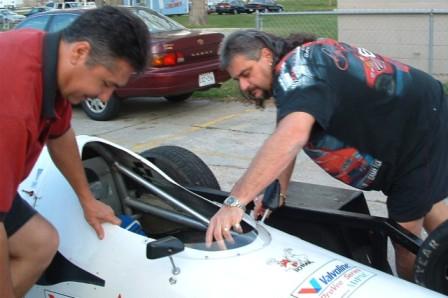
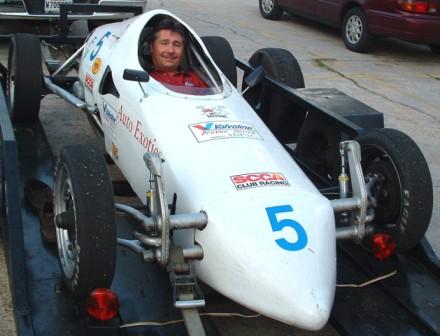
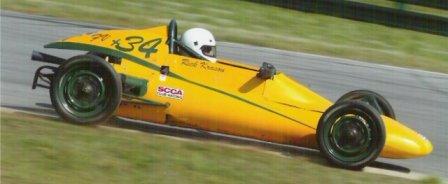
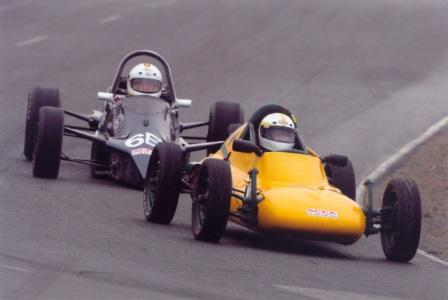
 who was selling the car to Mike and discovered that he had family in Macon which is near Milledgeville. Bill is neat guy, and like most Vee people was more than willing to go out of his way to help other Vee drivers. He is the headmaster at a private school in Virginia and was taking his vacation during the summer break period. He also was planning to visit with the family in Macon. Since the car was being sold with a trailer, we had timed out trip to coincide with his and he dragged it down and met us in a parking lot on Hugh’s old campus.
who was selling the car to Mike and discovered that he had family in Macon which is near Milledgeville. Bill is neat guy, and like most Vee people was more than willing to go out of his way to help other Vee drivers. He is the headmaster at a private school in Virginia and was taking his vacation during the summer break period. He also was planning to visit with the family in Macon. Since the car was being sold with a trailer, we had timed out trip to coincide with his and he dragged it down and met us in a parking lot on Hugh’s old campus. 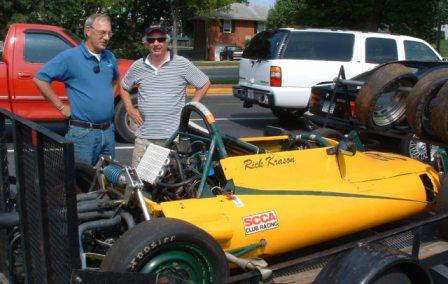
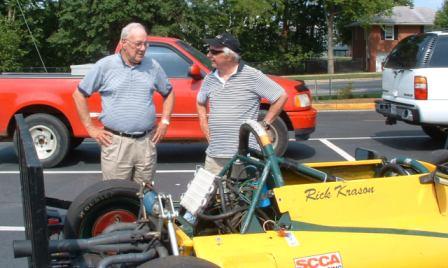 He and his racing partner, Rick Krason, had obtained the Zink and cleaned it up nicely. Rick is a veterinarian and a neighbor of Bills. I think they are buying another car and will continue to race Vees.
He and his racing partner, Rick Krason, had obtained the Zink and cleaned it up nicely. Rick is a veterinarian and a neighbor of Bills. I think they are buying another car and will continue to race Vees.
